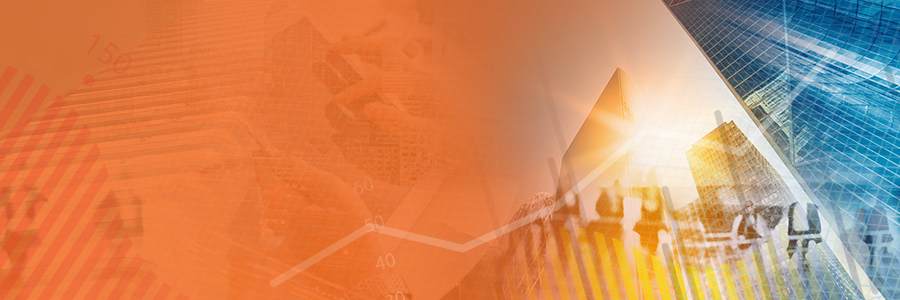
Here are seven strategies you should keep an eye on as you manage your organization’s business-critical mobility strategy to adjust to the “new normal.” Future-proof your operations for the inevitable scramble and guide your teams on smart strategies to rebuild and retool after the pandemic.
1. Encourage and Support Remote Working – It’s No Longer an Option!
One day, all your employees are either working in the office or in the field. The next day, everyone’s working from home.
It’s a big, sudden shift. It’s also the new normal. If your business isn’t set up for remote work, it could be the difference between weathering the storm or struggling during a crisis.
Did you know that internal IT support teams receive an average of 492 support tickets every month?1 Only a third of these tickets are resolved within the initial interaction – that’s approximately 325 tickets that require additional support!
Device issues typically lead to two hours of lost productivity for the worker using that device. If everyone is working from home, no longer able to visit IT in-person…well, you can imagine the increase in support tickets help desk teams may now be facing. A recent survey also discovered that critical device failures can cost an organization $20,000 USD of lost productivity and revenue.2 And that’s just for a single device!
Since employees can no longer swing by IT when their laptops are acting up, remote laptop management is critical to ongoing productivity. Being able to remotely access, control, diagnose and resolve issues ensures your remote workers keep working. It also alleviates frustration with the feeling of not being able to contribute while at home due to a malfunctioning laptop.
Whether it’s from the kitchen table or basement office, mobile technology gives your employees the tools they need to perform key functions such as processing orders from customized apps, or answering customer service calls.
And on a personal level, business-critical mobile technology ensures your employees stay connected and productive during uncertain, unpredictable times. Your workers need the right technology to perform at their best, anytime and anywhere, which means you need the right strategy and tools to enable them.
2. Mobile Device Security is More Important than Ever
Sadly, many hackers are using the uncertainty of the COVID-19 pandemic to break into networks and steal sensitive data.
Here’s are two examples how:
- Email phishing scams: Fraudsters are sending emails from the World Health Organization (WHO) claiming to have critical information regarding the coronavirus. The scammers ask for data which they then use to compromise businesses and mobile devices.
- Attacking home Wi-Fi networks: Devices using home Wi-Fi are vulnerable to man-in-the-middle (MITM) attacks, where someone intercepts and alters the data being transmitted. Information the remote worker thinks is going to a colleague is then sent to the hacker.
Unfortunately, it’s not the first or last time a crisis will be used to take advantage of unsuspecting individuals and businesses. Your organization must be prepared to handle these types of attacks when they’re least expected, or you could be vulnerable to security breaches.
That’s why mobile device security is incredibly crucial. Factors like stronger email spam filters or expanding website blacklists can prevent your remote workers from unwittingly getting scammed and sensitive business data from being stolen. With the right mobile device and IoT management tools, you can ensure the safety of your workers’ data and privacy, along with securing your corporate assets.
3. Greater Visibility into Your Supply Chain
During the COVID-19 pandemic and similar crises, full visibility into your supply chain is crucial. If your business is in an industry that provides essential services during emergency situations, effectively managing your supply chain can be lifesaving.
The coronavirus has introduced numerous factors into supply chain management which an effective mobile strategy can help you mitigate against. For example:
- Quarantine zones: If inventory is scheduled to pass through a quarantine zone, the use of business-critical mobile technology allows you to reroute for safe and timely delivery.
- Inventory procurement: Buying ahead to secure products, parts or raw material which is currently in short supply.
During unprecedented and uncertain times, businesses are looking for more real-time data analytics to influence how they adapt to these new challenges. However, a recent SOTI survey revealed that only 1 in 5 companies have total visibility into their mobile and IoT deployments. Modern organizations are looking for ways or tools that can provide actionable insights into the overall health of their mobile deployments in terms of app, device and user analytics.
Consider how your organization prioritizes actionable insights. Data-driven organizations are 23 times more likely to acquire customers and 19 times more likely to be profitable.3 During a time of uncertainty, actionable insights are crucial.
4. Protect People
Social distancing is the number one tool we can use to prevent the spread of COVID-19, and a business-critical mobility strategy helps with that.
As mentioned earlier in this blog, a robust business-critical mobility strategy enables employees to work from home. That keeps them productive. It allows them to work separate from one another. That keeps them healthy. It also allows them to connect and collaborate with each other. That keeps them engaged.
For your customers, business-critical mobile technology facilitates continued interactions and transactions without breaking social distancing requirements. Delivery drivers can drop packages off and use mobile tech to inform the recipient that it’s ready to be brought in. The recipient can acknowledge delivery of the package and bring it inside when they’re ready.
5. Perform Essential Tasks
When time is of the essence, the powerful technologies behind an effective mobile strategy helps frontline workers save lives.
- Empowering first responders to save lives: Police forces, fire departments, paramedics and other emergency personnel, can manage and secure mobile devices in the field and quickly resolve mobile tech issues to get workers back on the job quickly. The ability to remotely diagnose and solve mobile tech issues is critical to ensuring critical mobile devices are always up and running, so vulnerable members of the population get the help they need in a timely and efficient manner.
- Helping healthcare providers care for those who need it most: The burden on today’s healthcare systems is immense. Hospitals have adapted to provide essential care in home healthcare environments. It is critical for healthcare providers to be equipped with mobile devices that are secure and allows them to update and access Electronic Health Records (EHR) from anywhere, including from the patient’s bedside. Healthcare organizations also need to ensure mobile tech issues experienced by healthcare providers in the field can be diagnosed and fixed remotely to provide reliable and high quality care for patients.
- Streamlining manual, paper-based processes: A healthcare provider with no programming experience can easily create a mobile app for screening presumptive COVID-19 patients. By recording patient symptoms and body temperatures, they can effectively monitor and direct patients to whether they should be tested for the virus or not, helping to eliminate a potential bottleneck of patients waiting at the hospital to be screened.
6. Location Tracking in the Era of Social Distancing
If there’s one message health experts are strongly stressing, it’s to stay home. Don’t go out unless it’s essential.
Should any remote workers need to venture out for any reason, using device tracking and advanced geofencing can help protect them and your business.
For Bring Your Own Device (BYOD) users, the corporate side of the device can be locked down when the person heads out. This ensures the worker still has personal use of the device.
As more of the global workforce transitions to remote work, many organizations have activated their BYOD policies and infrastructure. IT leaders need to ensure that they have the best Enterprise Mobility Management (EMM) strategy to effectively gain visibility and control over their corporate information, while also ensuring their workers’ privacy.
If you’ve watched the news, you’ve seen how busy supermarkets and pharmacies have been. With so much activity going on, it’s easy for someone to misplace their device (say at a cash register). With insights on device location, you can lock them down and eliminate the risk of sensitive corporate data being lost or stolen.
7. Send Real-Time Updates
It seems like the news surrounding COVID-19 is changing on an hourly basis. And with each passing bit of information, local jurisdictions have an update to match.
For field workers who aren’t working from home, you can send updates to their devices informing them about things like:
- Travel restrictions
- Quarantined areas
- New work policies
You can even remove or uninstall apps or features which are no longer required. For example, if delivery drivers are being taken off the road, there’s no need to for them to use a vehicle log app. That frees up device memory and speed, thus making them more productive as they do other work from home.
As new developments arise, it’s important to have real-time access to information. A connected business-critical mobility strategy enables your organization to update all mobile devices in your infrastructure with the most up-to-date data, in real-time.
Tips to Keep You and Your Family Safe
To say these are unprecedented times would be an understatement.
COVID-19 has brought the world to a halt. Schools are closed. International borders have been shut down. Sporting and public events are cancelled. Everything has just…stopped.
Being vigilant is key to curbing the spread of COVID-19. Here’s what you can do to keep yourself and the people around you safe:
- Stay home as much as possible
- Keep 6 feet distance between yourself and others
- Thoroughly wash your hands with soap for at least 20 seconds
- If you aren’t feeling well, self-isolate and speak with a medical professional
1. askSpoke, 35 IT Help Desk Statistics: How Does Your Team Stack Up?
2. askSpoke, 35 IT Help Desk Statistics: How Does Your Team Stack Up?
3. Keboola, 5 Stats That Show How Data-Driven Organizations Outperform Their Competition, 2019.



